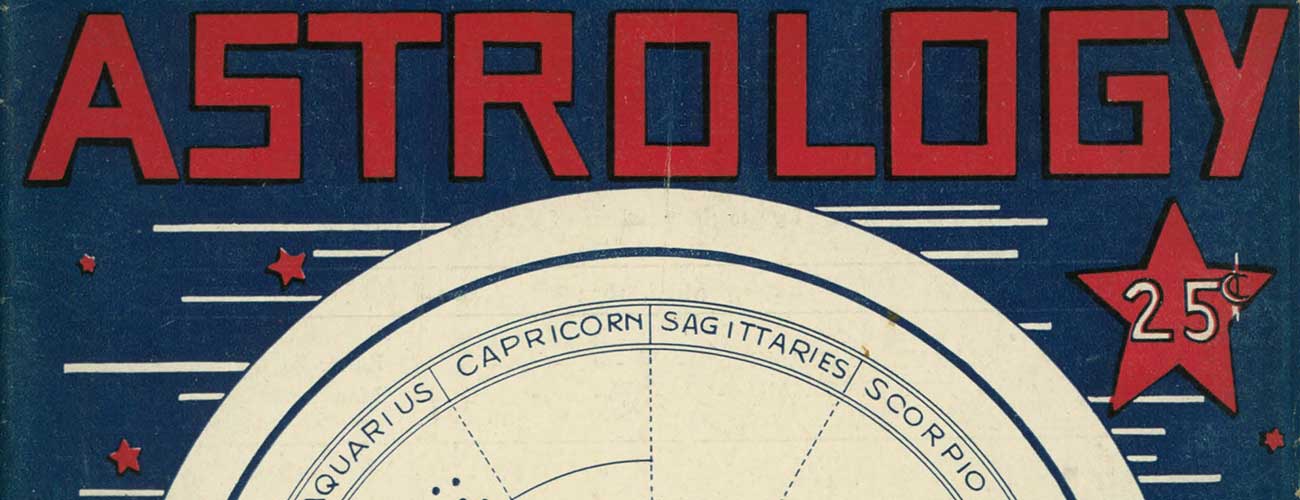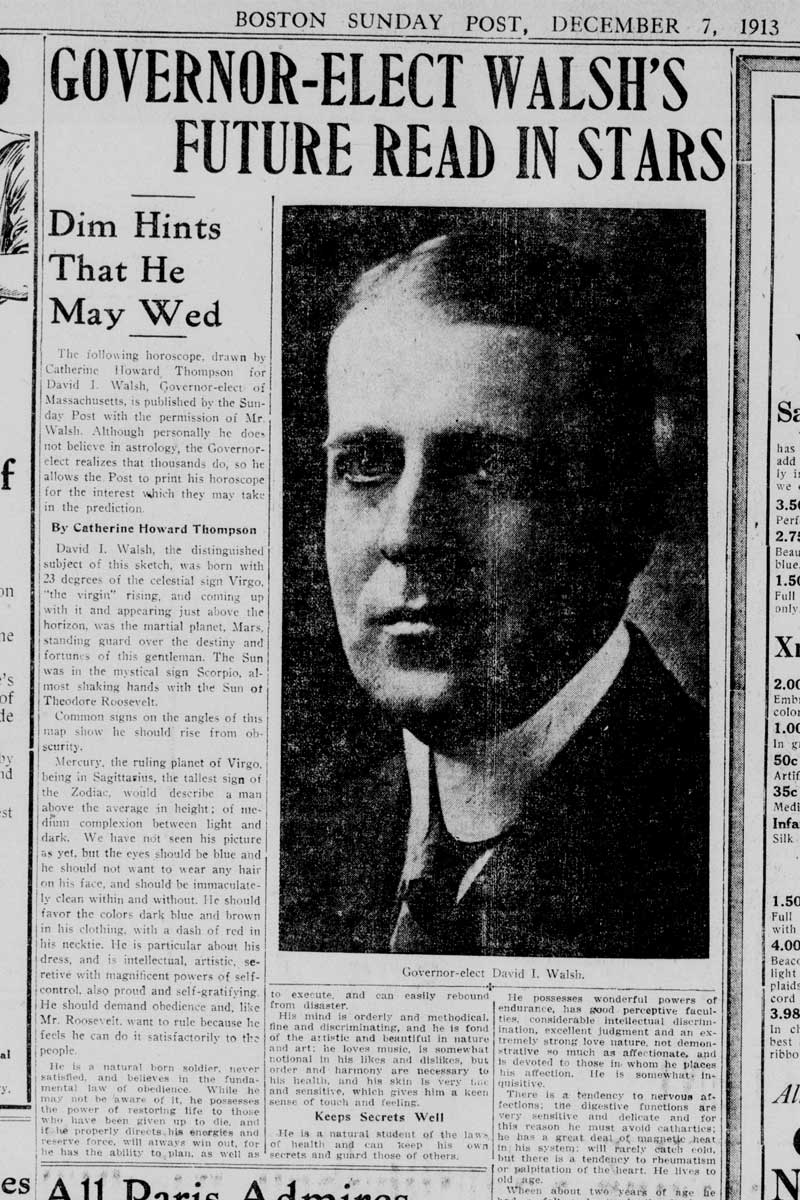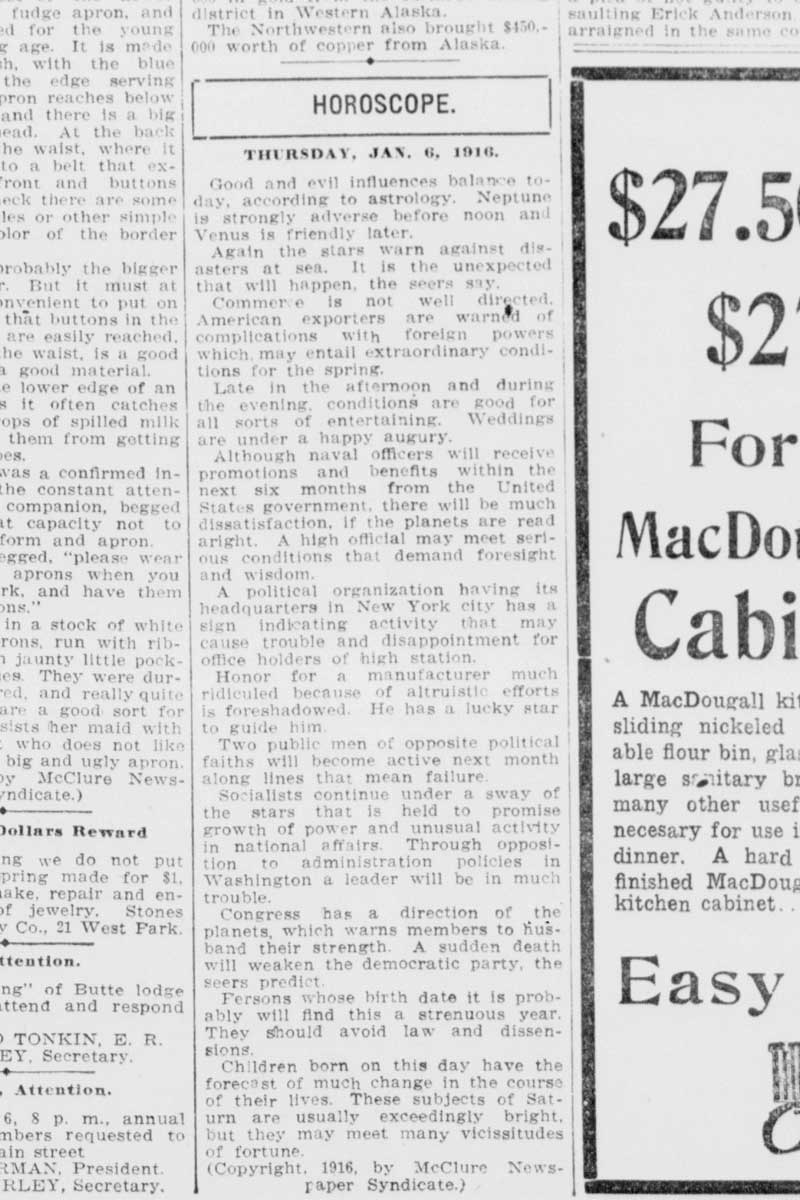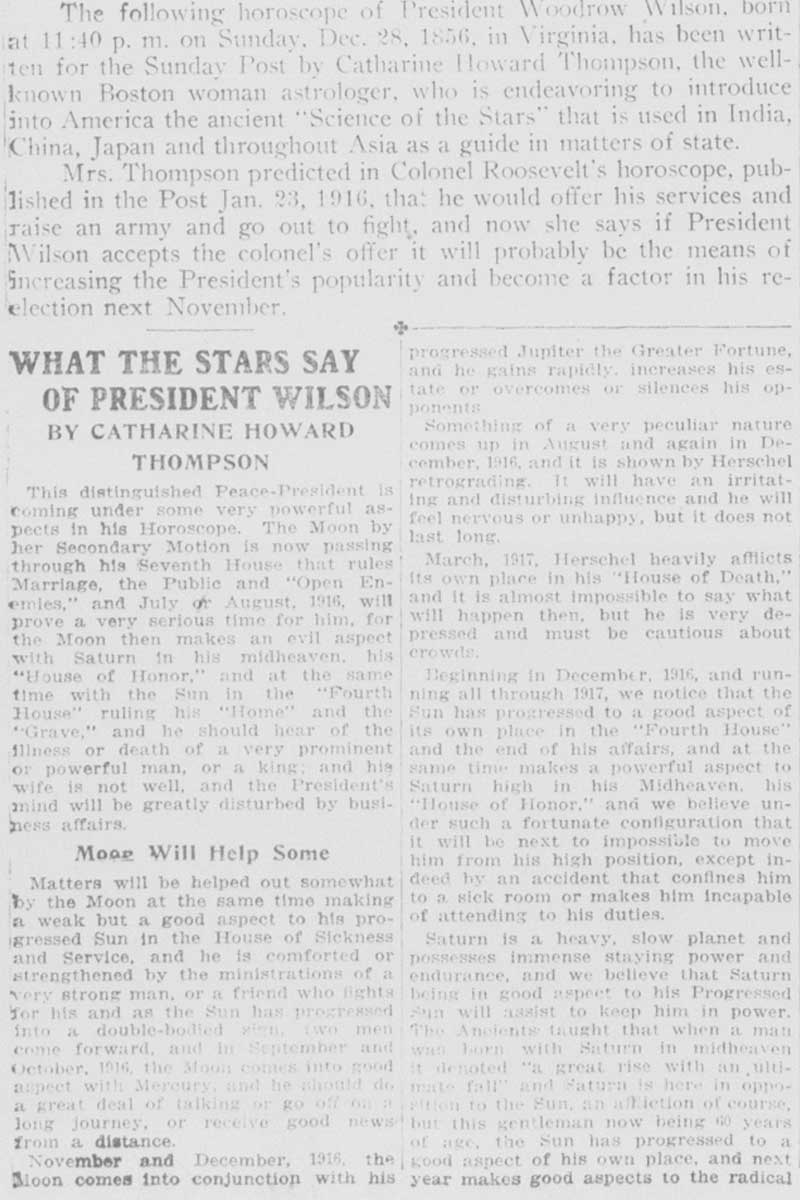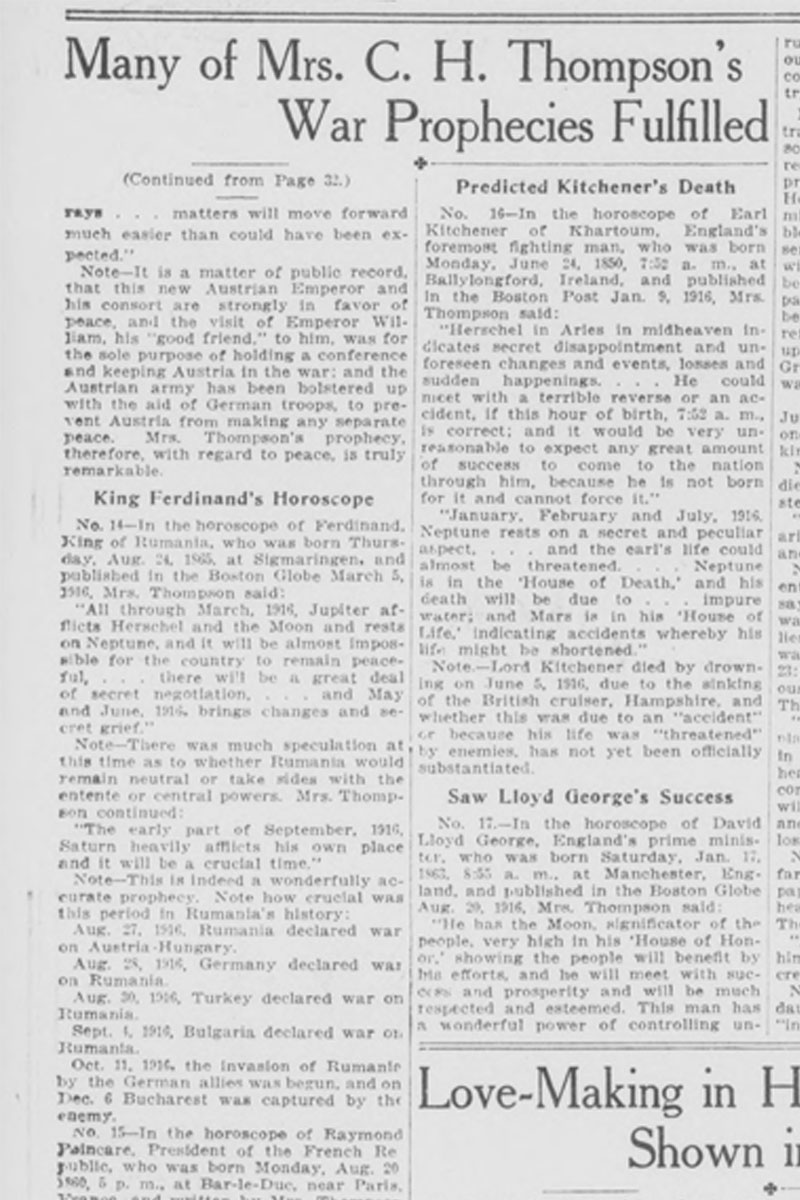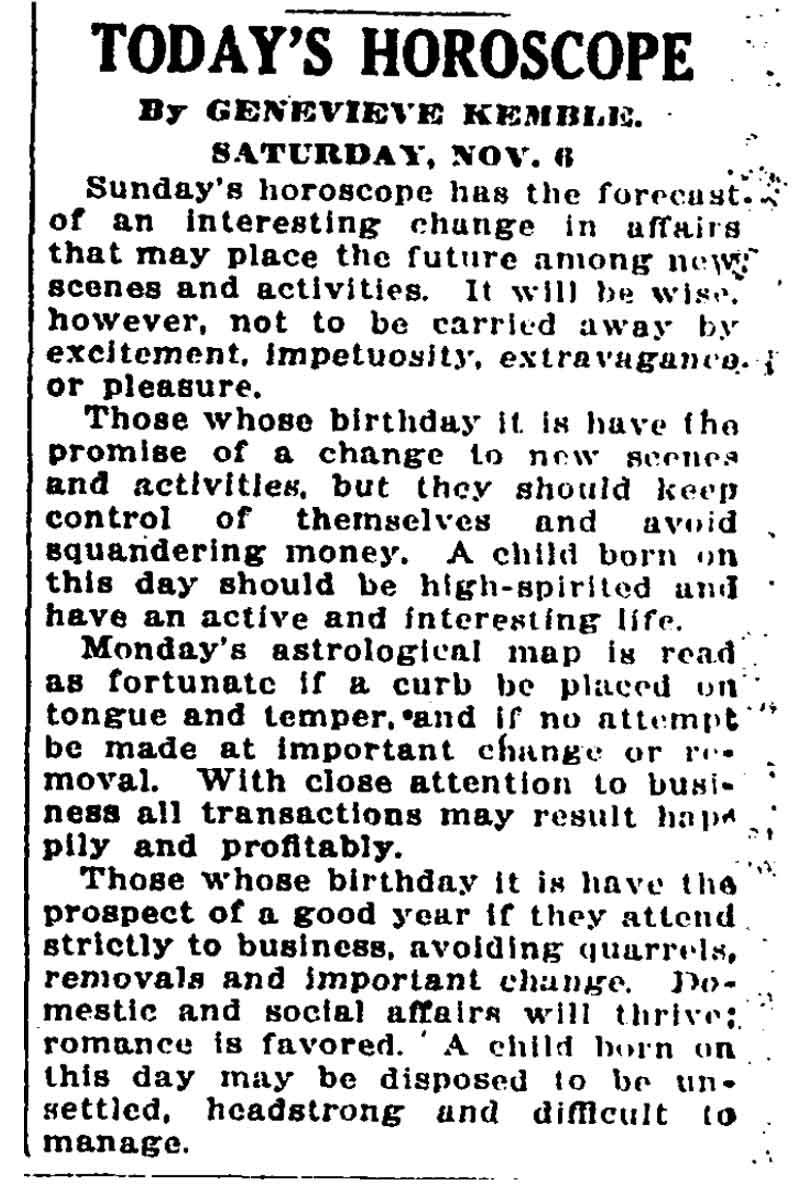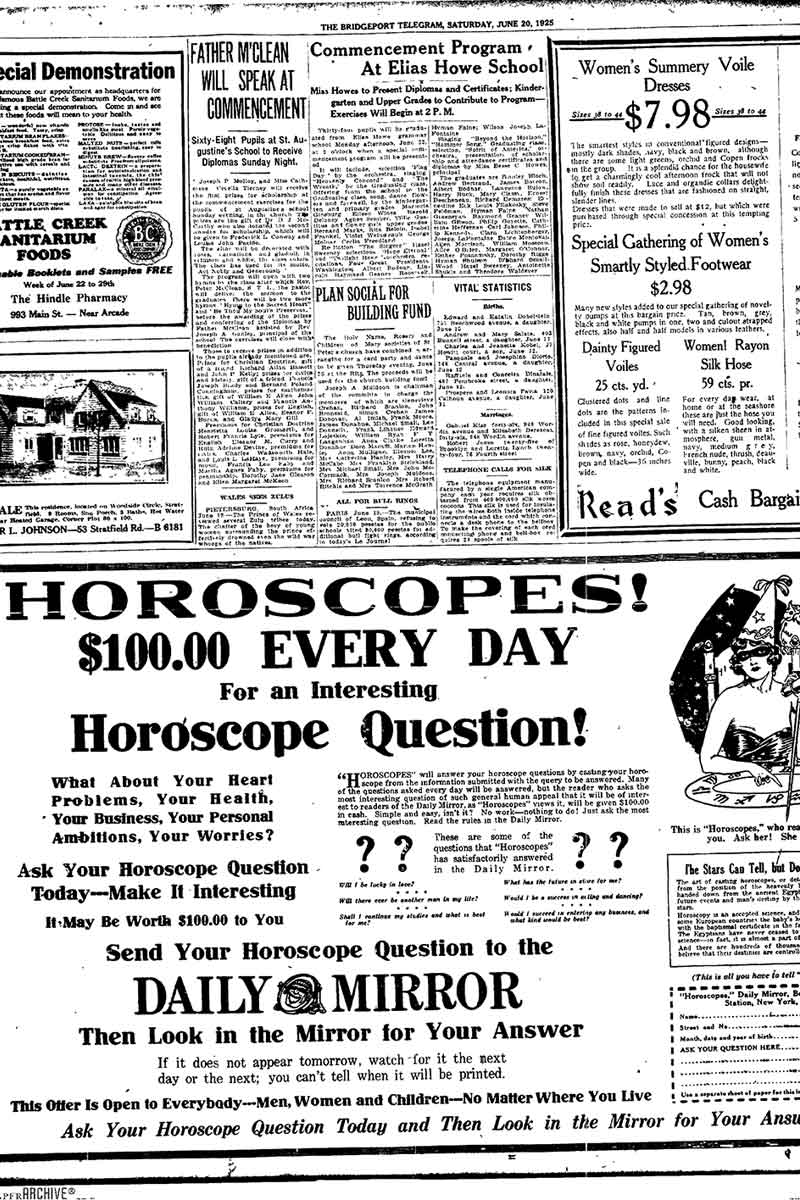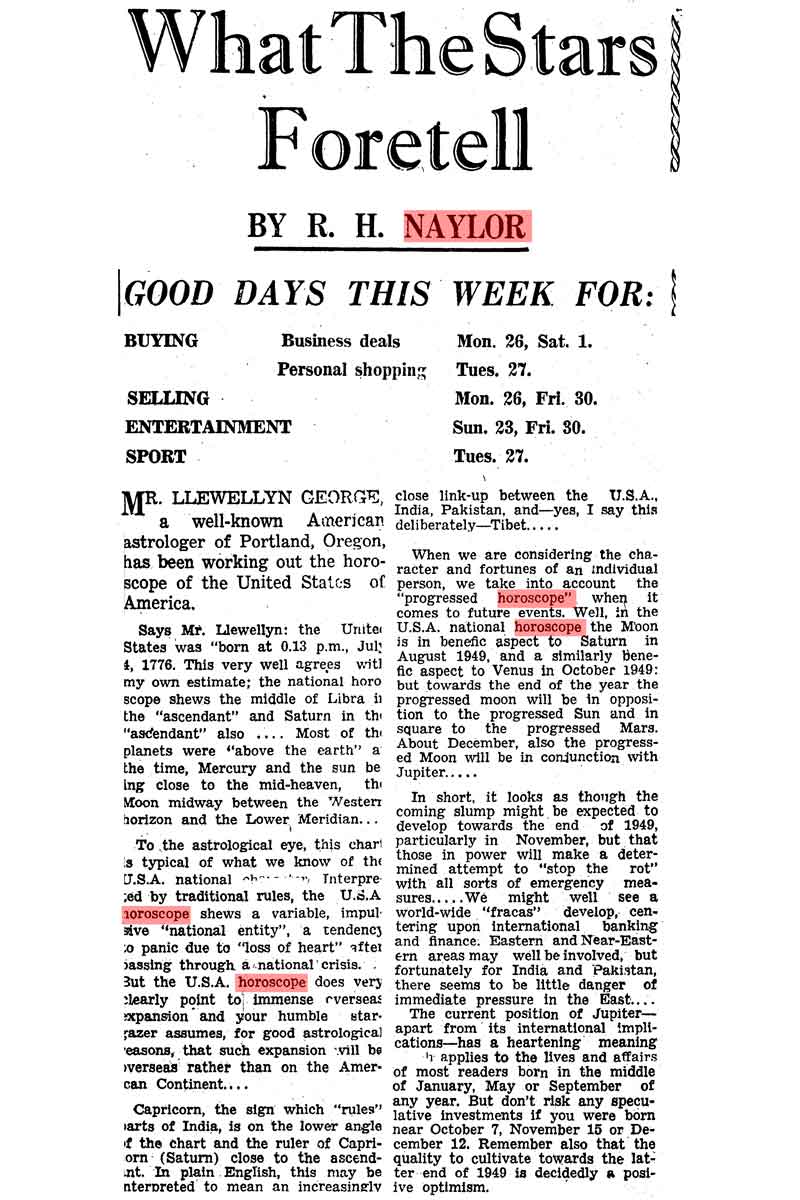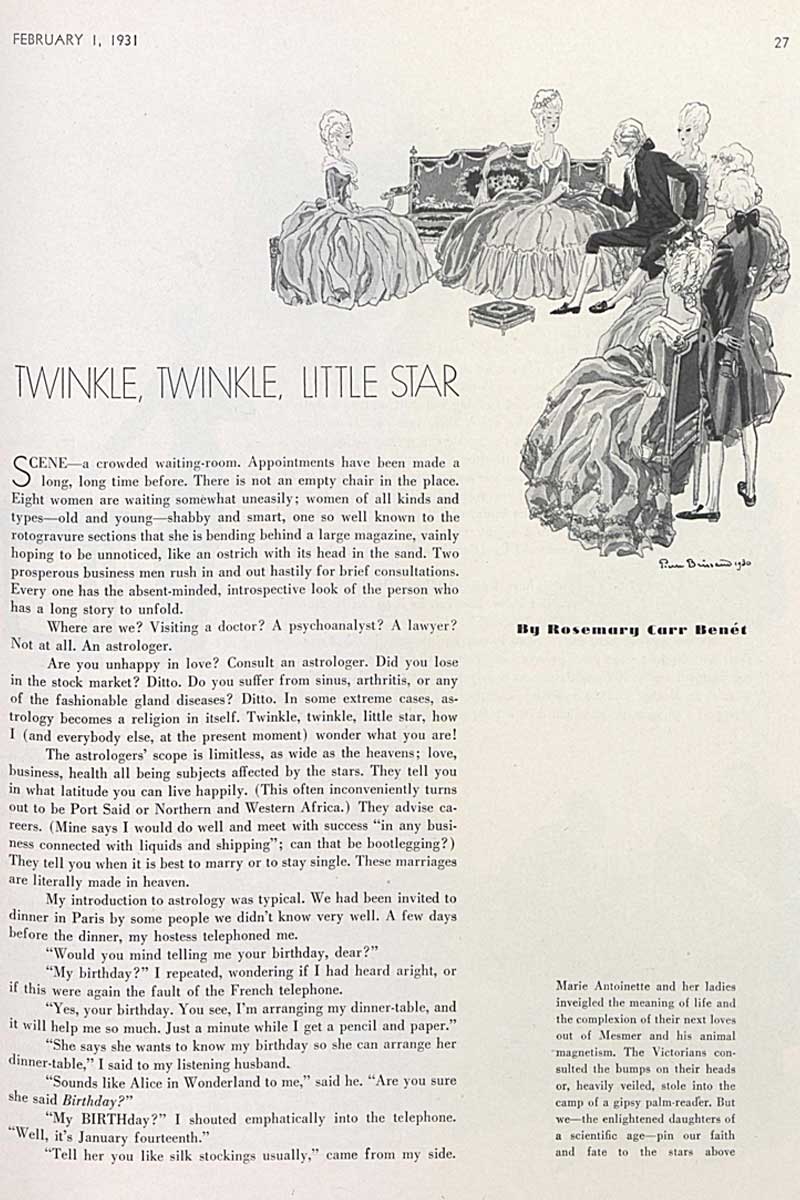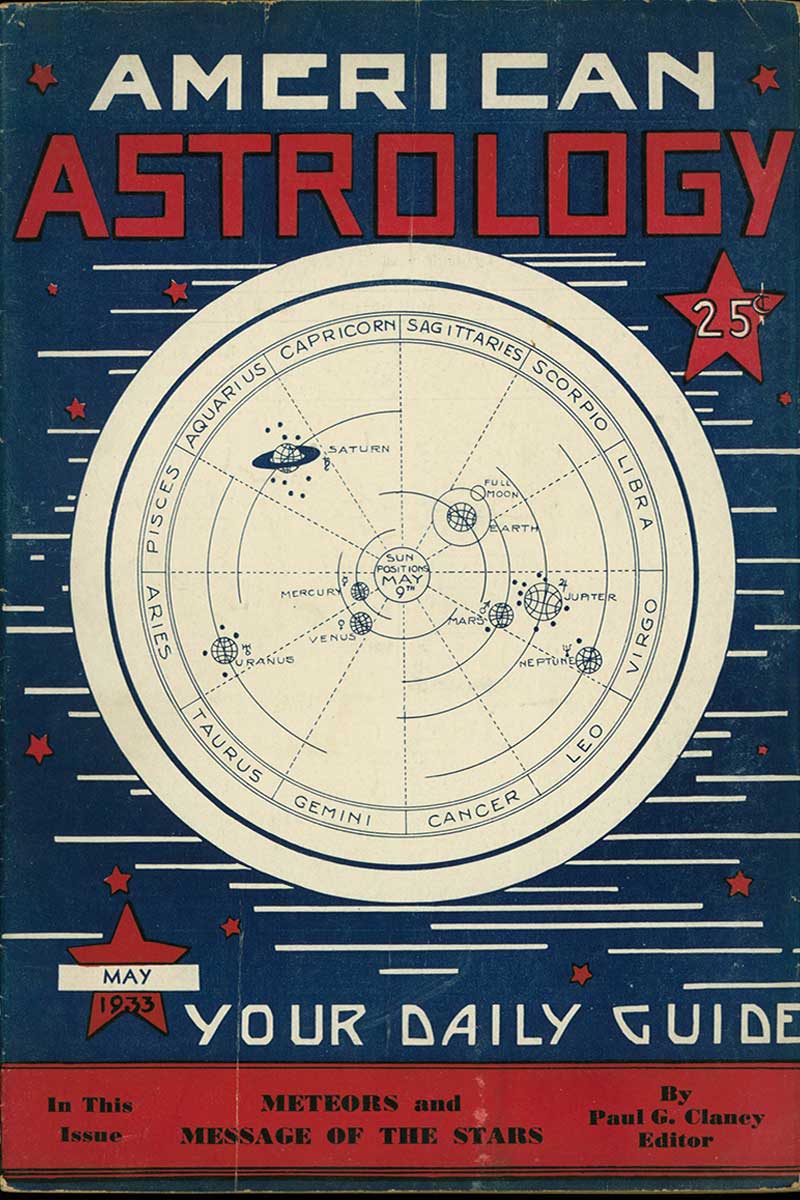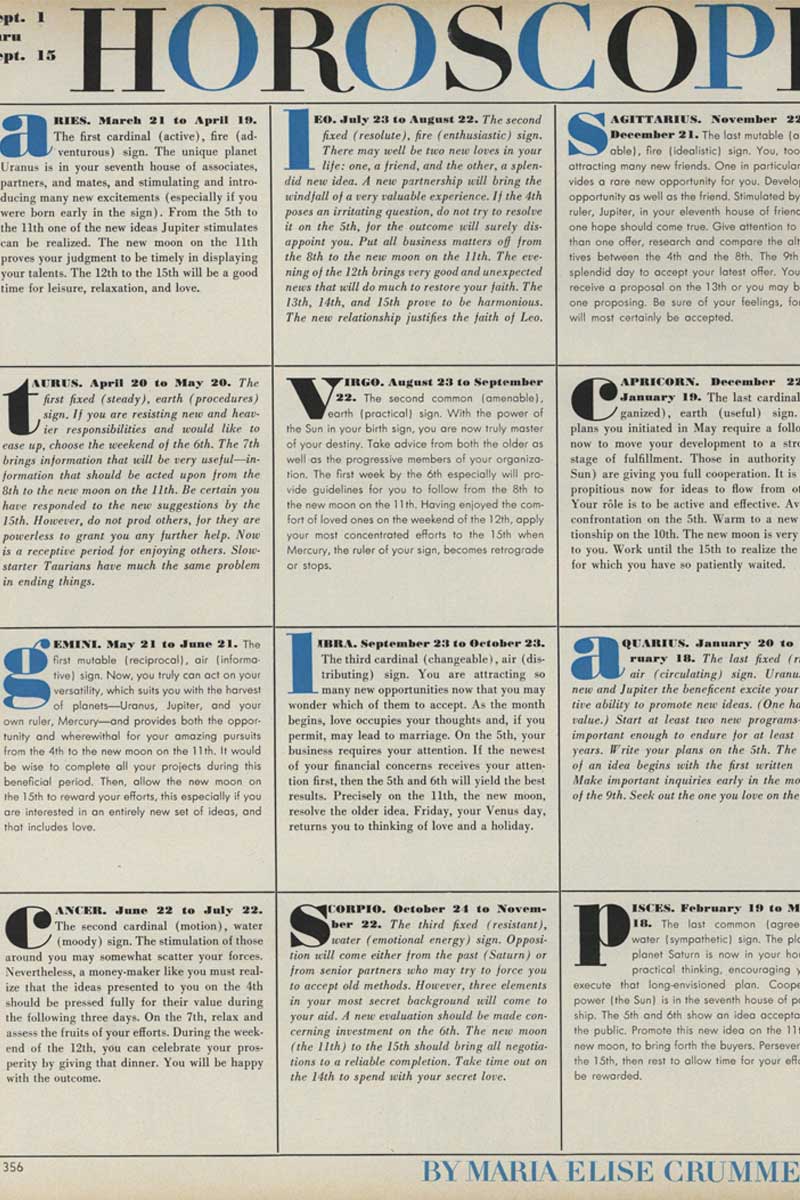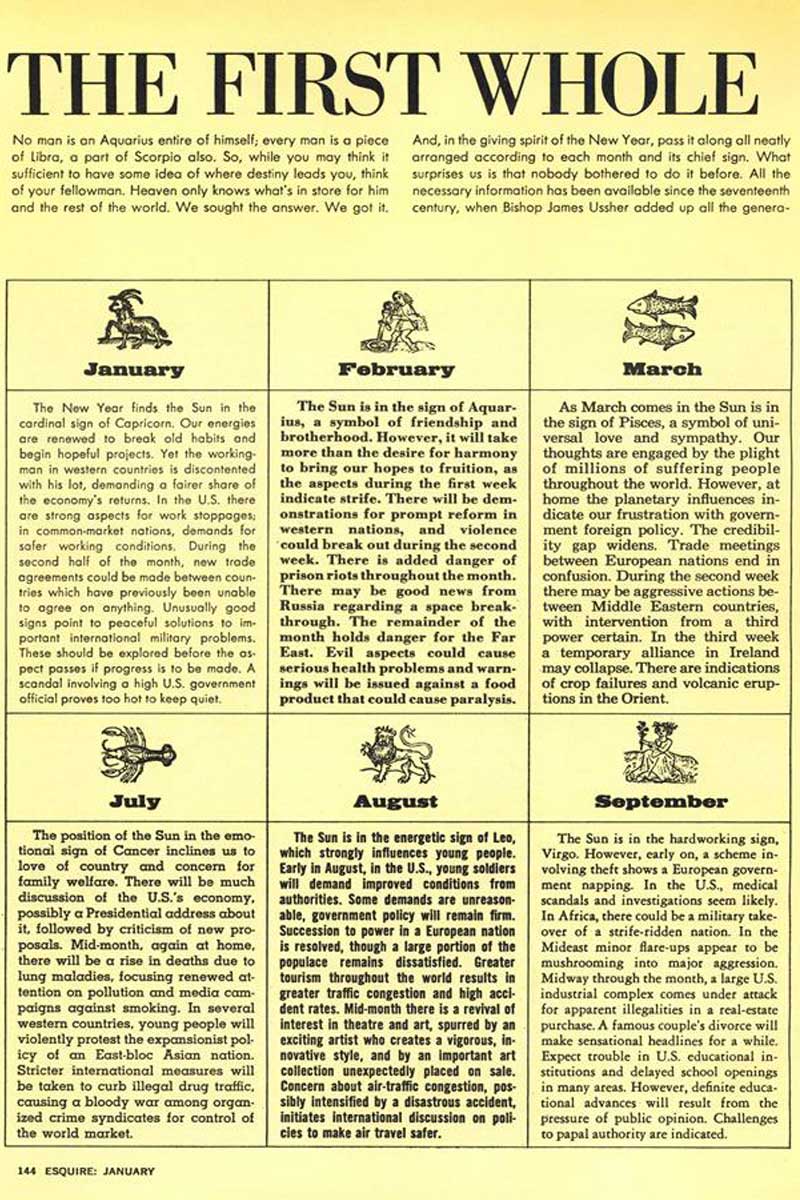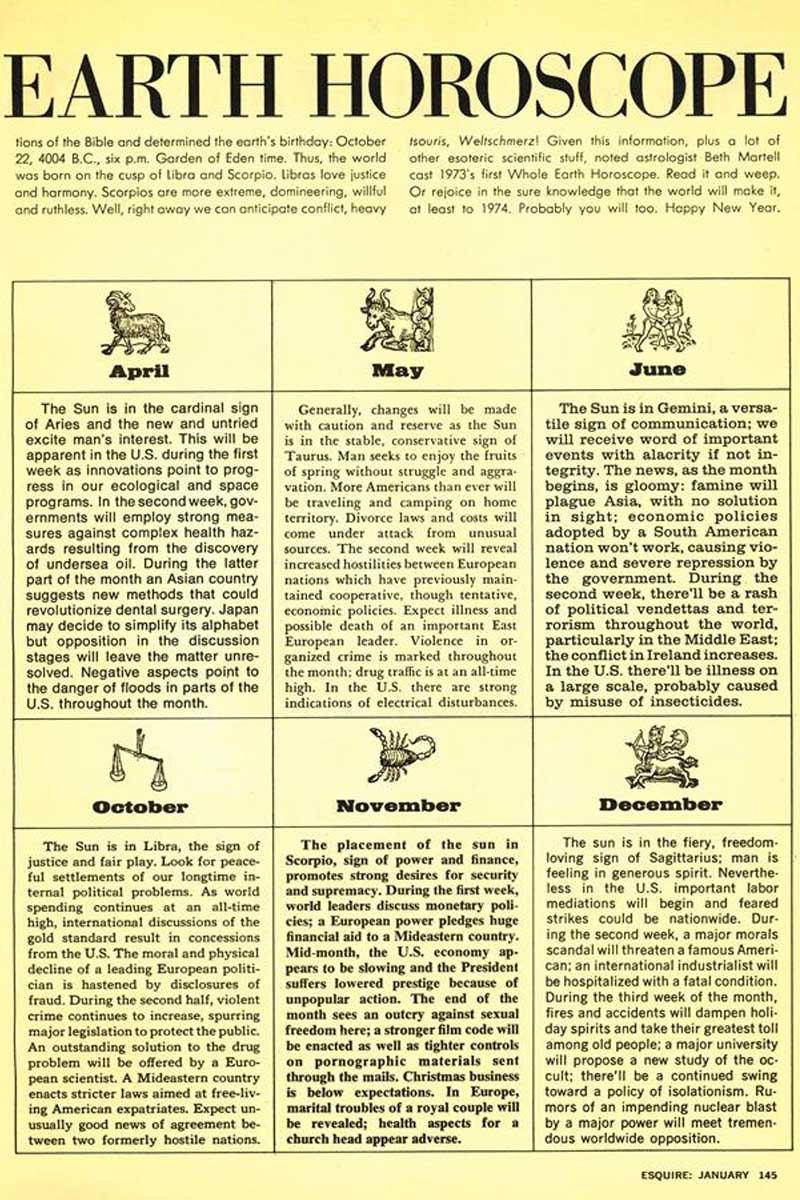The newspaper horoscope column is a century old. That means that through two world wars, the fall of the Soviet Union, and the rise of the internet, publications have been devoting their back pages (and now their back verticals) to celestially inspired prognostications. Horoscopes continue to appear in both print and online newspapers and remain a staple of women’s magazines, including digitally native ones. Broadly, Refinery29, Man Repeller, and Rookie, for example, all have regular horoscope columns. And in 2015, Bustle published more than 100 themed horoscopes, prescribing everything from beauty routines, to where to have sex, to the best Taylor Swift song for every sign.
Welcome to 2016, where you can get your daily horoscope on Snapchat, as a meme, or with a side of GIF.
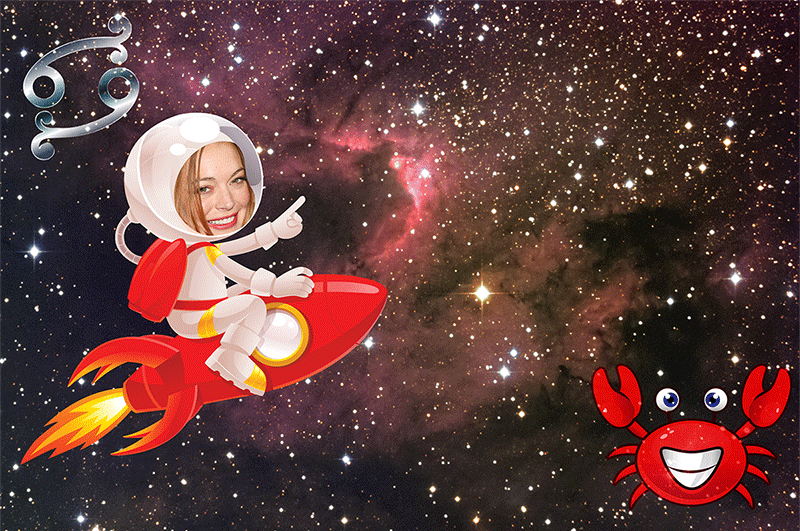
(GIF: The Cut / Kelly Chill; Photos: Naoyuki Noda / Getty Images)
In this era of self-reflection (or, self-obsession), horoscopes fit right in. But there is something curious about them. How have horoscopes aged so well? Old media gets a lot of flack for its janky attempts at decoding the internet, yet horoscopes have been enthusiastically grandfathered in. In other words, how did journalism and astrology meet, and why are they still seeing each other?
For one thing, horoscopes are popular, and not only among those who believe. Polls over the last 20 years consistently show that while only about 1 in 4 Americans believe in astrology “to a degree,” more than half read horoscopes. (Less than 10 percent, meanwhile, report consulting horoscopes before making decisions.) It’s clear, then, that rather than find them prescriptive, most readers view horoscopes as a fun or useful moment of self-reflection.
“I think it’s really useful for meditating on your day,” says Annabel Gat, the staff astrologist at Broadly, the Vice vertical for women. Gat, a certified astrologer, first studied the discipline in appreciation of its cultural and historical significance. Astrology, she says, “might not be a real science, but it’s a hugely important part of history.”
Neha Gandhi, vice president of editorial strategy at Refinery29, agrees. “What we love about horoscopes,” she says, “is that it’s personal. Every member of our audience believes that someone is talking to them directly about their life.”
Indeed, personalization is key. Not only does it provide a way for the soul to check itself out in the mirror (“Hmm … I really shouldn’t second-guess myself, and I do have hidden gifts …”), it’s also why horoscopes often feel premonitory. It’s called the Barnum Effect, the same handiwork at play in personality tests and BuzzFeed-style “What Kind of Sloth Are You?” quizzes: It’s the tendency for people to find universally true statements to be accurate descriptions of themselves when they believe they’re tailored to them. (Who doesn’t have hidden gifts and shouldn’t second-guess themselves?)
Personalization could be the secret to horoscopes’ enduring appeal, and newspapers may have had a role in popularizing the personalized horoscope. The horoscope column emerged in the early 20th century, and it evolved throughout that century to become more personal, less prescriptive, and heavily focused on the sun signs and their associated personality types, often disregarding more complicated celestial arrangements.
When horoscopes first started appearing in newspapers, they were confined to birth horoscopes for famous people, such as a 1916 horoscope of President Woodrow Wilson in the Boston Sunday Post. That’s around the same time daily horoscopes began to appear, distributed by the McClure Newspaper Syndicate, best known for its syndicated comics. Those early horoscopes tended to be similar to birth horoscopes, addressing people born on that day, with additional “general” reading directed toward the rest of the public.
Some Horoscopes Through History
The leap to the 12-paragraph format, one prediction for each sun sign, emerged in the 1930s, just as the daily horoscope column was becoming standard newspaper practice. The model is credited to Dane Rudhyar, a French-born musician turned astrologist who championed the popular notion of sun-sign personality types (hello, moody Cancers, organized Virgos, and sensitive Pisces) with his book Astrology of Personality, published in 1936.
Nicholas Campion, one of the world’s foremost astrology historians, says the sun-sign astrology on which the format is based is an innovation of the 20th century. Previously, horoscopes were divined by consulting all of the celestial bodies in an astrological chart, but as horoscopes became part of popular culture, so did the notion that the sun sign had interpretive significance on its own.
Over time, horoscopes became standard fare not only in newspapers, but in women’s magazines specifically, and were quick to migrate online as such. iVillage, one of the first websites targeted at women, had a drop-down menu of the site’s six primary content categories; it included “shop online” and “check horoscope.” In polls, more women say they believe in astrology than men do, though not by much (interestingly, the gender gap is much bigger in the UK and Canada), though teasing out why that may be leads to a dizzying chicken vs. egg spiral.
Broadly’s executive editor Callie Beusman says she didn’t include horoscopes to conform with the tradition of women’s magazines. She had wanted to include them from the start, because she and her colleagues back at Jezebel, the online women’s site where she’d worked previously, enjoyed them. She found Gat, the certified astrologist who writes for Broadly, through the “burgeoning Bushwick witchcraft community” and readers love them. Gat’s horoscopes are the most-read content on Vice’s Snapchat Discover channel, says Beusman. They’re “a fun, entertaining way to make sense of stuff,” she says. “We don’t have answers, no matter what, so you might as well ask an expert in celestial movements.”
Studies have attributed the ubiquity of horoscopes for women to consumerism (see: lipstick horoscopes), sexism (see: women’s perceived or actual lack of control), and women’s tendency to believe in religion more generally than men (see: sexism). But another note to consider is how much this perceived audience of women has influenced horoscope writers (see: chicken vs. egg).
Early horoscopes foretold the outcomes of war and political intrigue. On January 5, 1916, for example, The Anaconda Standard reported that the stars indicated: “Socialists continue under a sway of the stars that is held to promise growth of power and unusual activity in national affairs.” On June 25, 1920, according to the same paper, they foretold: “The king of Sweden falls under a sway that foreshadows socialistic intrigues.” Today, horoscopes guide readers in the ways of love, relationships, beauty, and money, the core themes of all women’s magazines.
Beusman, at Broadly, objects to the view that because they’re “women’s fare,” horoscopes are somehow trivial. How is checking your horoscopes, she wonders, more frivolous than checking sports scores?
“Astrology is more real than football,” Beusman says.
New York Magazine’s The Cut began publishing weekly horoscopes, otherwise known as AstroloGIFs, in 2014. Each of the 12 standard paragraphs is accompanied by a GIF that expresses that sign’s prediction. Editorial Director Stella Bugbee says she thought they’d make an entertaining addition to the magazine: They’re cheeky, funny, endlessly flexible, and superbly sharable. After all, which Scorpio would turn down a GIF of Taylor Swift fist-pumping at the Grammys to remind them that the time is ripe for collaborating with others?
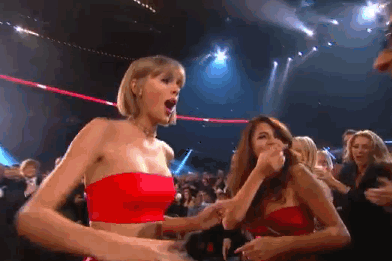
And who wouldn’t share a GIF of Tina Fey high-fiving a million angels with all of their Saggitarius friends so they remember that they can make their dreams come true if they’re not afraid of setbacks?
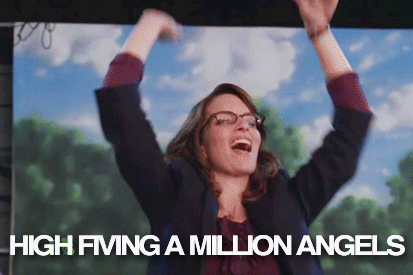
While the column was predictably popular, Bugbee found soon after the column launched that readers took the horoscopes seriously. The same readers come back every week, says Bugbee, and they’re not there for the snark. “I had to readjust my understanding of how people treat this.” In October 2015, The Cut hired Samuel F. Reynolds, a professional astrologer with an online following. “When I came to accept that people take this seriously, we decided to find someone who takes it seriously,” says Bugbee. It helps that Reynolds came with a “built-in audience.”
At Refinery29, in addition to weekly horoscopes, the online magazine partners with the makeup company Revlon to produce a monthly Love Forecast. The illustrated feature combines an editorial horoscope on love with a Revlon-sponsored beauty forecast: A look that’s right for each sign in each month. The beauty forecast for Pisces in March, for example, is the graphic cat-eye, and comes with instructions for how to get the look using specific Revlon products.The monthly look “reinforces that idea of personalization and identity,” says Gandhi of Refinery29, “which we know audiences on the internet, no matter the demo, love.”
The weekly horoscopes at Refinery29 are written by the Astrotwins, who also write for Elle, but are tailored for the magazine’s audience. “We want to make sure that the horoscopes feel broadly relevant to our audience,” says Gandhi, so they tend to cover “the aspects of a woman’s life, and that runs the gamut from thinking about politics to thinking about lipstick.”
In other words, horoscopes act as a kind of mirror, reflecting back to readers their hopes, wishes and fears.
The faith of horoscope readers, then, is not in the stars, but in the pen (or GIF).
Chava Gourarie is a freelance writer based in New York and a former CJR Delacorte Fellow. Follow her on Twitter at @ChavaRisa

